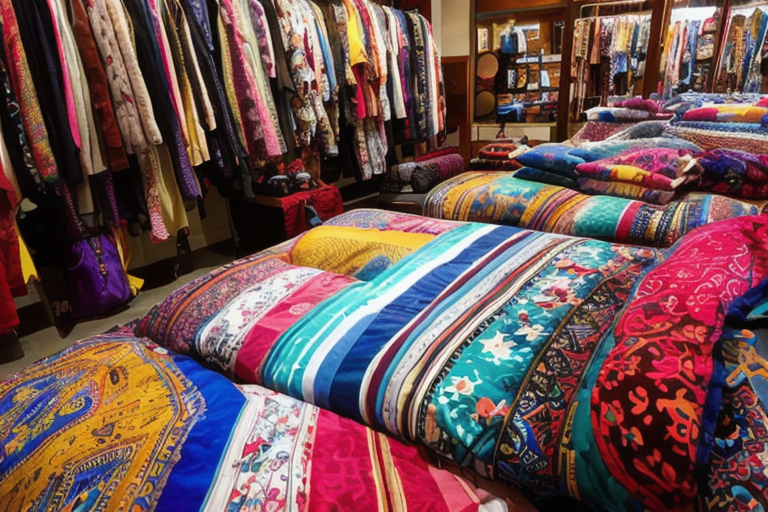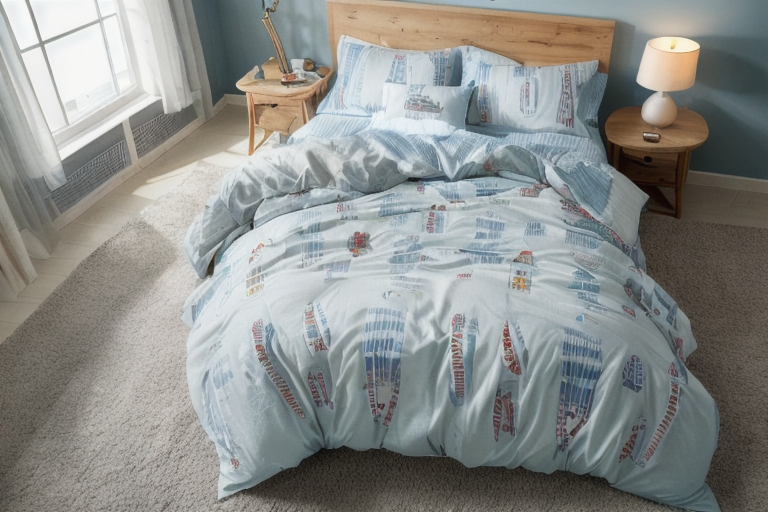When it comes to luxury bedding, few items impart the indulgent comfort of a finely-made down comforter. Lovingly referred to as “warm hugs for your bed,” down comforters have been cherished for centuries thanks to their unrivaled softness and ability to insulate heat. But with so many options on the market, how do you choose the right one?
This ultimate beginner’s guide aims to educate readers on all aspects of down comforters, from common myths and hypoallergenic options to fill power quality and construction techniques. You’ll gain the knowledge needed to select the perfect down comforter based on climate, longevity, and budget. Let’s banish bedding confusion and embark on a journey of cozy sleep!
What is a Down Comforter?
Before delving into specifics, let’s cover the basics: what exactly is a down comforter?
- A down comforter consists of an outer fabric shell stuffed with insulating down material obtained from geese or ducks.
- The fluffy fill in down comforters makes them extremely warm, breathable, and comfortable.
- When shopping for down comforters, customers can choose from options like white goose down, colored duck down, and even hypoallergenic synthetic materials.
- Key benefits of down comforters include:
- Ultimate lightweight warmth
- Breathability that prevents overheating
- Long durability with proper care
- Luxurious comfort that lulls you to sleep
- Compared to alternatives like duvets, quilts and blankets, down comforters provide superior insulation thanks to the thermal properties and fill power of down fill.
Now that you know the basics, let’s unpack the spectrum of down comforters available on the market today. The rainbow of options may surprise you!
The Color Spectrum: White vs. Colored Down

When envisioning a fluffy down comforter, most imagine a perfectly white cloud-like layer floating atop luxury bed sheets. While white down comforters remain popular for their clean aesthetic, colored down comforters have grown in availability and popularity in recent years thanks to vivid dyes that enhance the cozy factor.
White Down Popularity
- Traditionalist preference – White maintains a pristine, elegant look
- Avoids potential dye transfer onto sheets
- Easier to bleach if stains occur
- Light and airy ambiance suits some decor tastes
Emergence of Colored Down
- Vibrant dyes like ruby red or sapphire blue
- No dye limitations with synthetic filled comforters
- Allows for bolder fashion statements
- Coordinates with decor for stylish bedroom
- Duvet covers heavily influence perceived color
While white down retains devotees, colored comforters introduce an artistic dimension through vibrant hues and increased design potential. Layering them with patterned duvet covers provides ample opportunity to incorporate splashy color into your sleep space.
Hypoallergenic Options for Sensitive Sleepers
Beyond eye-catching aesthetic choices, down comforters must meet different comfort needs, particularly for those with sensitivities. Thankfully, the rise of hypoallergenic bedding materials allows more people to enjoy down-like coziness regardless of allergies and chemical sensitivities.
Problem Materials for Sensitive Sleepers
- Goose or duck down and feathers – Contain allergens
- Low thread count cotton – May cause skin irritation
- Harsh detergents – Include fragrances, chemicals
- Budget quality resources – Cut corners on safety
Hypoallergenic Solutions
- Synthetic fill replaces down, like polyester or microfiber
- Organic cotton shells with high thread counts over 200
- Oeko-Tex certification ensures safe production methods
- ** Responsible Down Standard (RDS)** ethically sourced materials
- Washed only using fragrance/dye-free detergents
While likely pricier than traditional down, hypoallergenic comforters allow those with sensitivities to enjoy cozy, chemical-free sleep.
The Key Role of Fill Power in Down Quality
When assessing down comforter quality, the magic number to understand is fill power. This measures the “fluffiness” and insulation capacity using a numerical scale.
What is Fill Power?
- Indication of down cluster quality from geese or ducks
- Measured as cubic inches per ounce of space down fills
- Most comforters range from 400 to 900 fill power
- Higher numbers = Better Down
| Fill Power | Characteristics |
|---|---|
| 400-500 | Budget warmth, heavier |
| 600-650 | Mid-weight, all-season use |
| 700+ | Ultra-light, luxury quality |
As shown in the chart, higher fill powers above 700+ distinguish exceptional down with superior loft, durability and lightweight warmth. This comes at a price though, with high fill power down costing exponentially more. Thankfully, even budget 400-500 fill comforters impart respectable comfort.
Construction Techniques Impact Performance
A down comforter’s internal framework intensely influences its durability, longevity and maintenance requirements. While less visible than colorful exteriors, understanding construction techniques helps select optimal bedding.
Main Techniques
- Baffle Box – Separates down into fabric boxes
- Box Stitch – Sewn fabric walls divide down
- Channel Stitch – Simple stitch lines contain down
| Method | Durability | Heat Distribution | Price |
|---|---|---|---|
| Baffle Box | Supreme | Even, eliminates cold spots | Highest |
| Box Stitch | Strong | Consistent warmth | Mid-range |
| Channel Stitch | Vulnerable to shifting | Increased cold zones | Lowest |
Proper box and baffle construction provides durable frameworks to prevent down shifting while allowing even heat distribution. Channel stitched comforters comparably struggle to contain loose down long-term.
Understanding construction style remains vital for shoppers wanting lasting performance. Those desiring indulgent lifelong use benefit from the unparalleled sturdy insulation of baffle boxes.
Tailoring to Climate Conditions

When many imagine down comforters, thoughts drift to frigid winter nights spent burrowing beneath mountains of feathers. However, innovative modern techniques allow down to provide year-round customized comfort through strategic designs catered to climate.
Warm Weather Use
- Specialized “summer weight” options
- High breathability prevents overheating
- Lightweight materials reduce insulation
- Lower fill powers around 400-600
Cold Weather Use
- High fill power 700+ for extra warmth
- Heavyweight materials hold body heat
- Baffle box designs prevent heat gaps
- Well-suited for winter climates
Alongside traditional winter use, lightweight down construction transforms traditional cold-weather bedding into all-season breathable comfort. Savvy shoppers choose options strategically suited for their regional climate needs.
Long-Term Care & Maintenance
To fully leverage your investment in a quality down comforter, proper long-term care remains critical to performance and longevity. While ultra-soft and snuggly, down demands special treatment when cleaning and storing between uses.
Washing Guidance
- Only wash when truly dirty, roughly every 2 years
- Use mild detergent without dyes/fragrance
- Low temperature cycles, never exceeding 105F
- Add tennis balls to tumble without clumping
Drying Methods
- Thoroughly air dry or tumble dry on low
- Never dry clean or iron (melts feathers)
- Fully fluff and re-loft upon drying
With some patience and delicate care, a quality down comforter used properly delivers a lifetime of unparalleled comfort. Show your bedding some love and it will repay you in restful sleep for years on end.
Conclusion: Choosing Your Ideal Down Comforter
With this broad beginner’s knowledge in your back pocket, the rainbow of down comforter options likely feels far less intimidating. You now can strategically select the perfectly personalized model to complement your climate, bedroom decor goals and budget.
While white still dominates many homes as the iconic down color, don’t shy from infusing vibrant color to liven your space. Those with sensitivities can sigh with relief knowing hypoallergenic models provide similar sublime comfort. Proper construction proves vital for long-term durability and even heat distribution.
Above all, understanding fill power stands critical when identifying quality down guaranteed to cradle you in featherweight warmth for years on end. Let these key learnings guide you towards heavenly rest night after heavenly rest night!
Frequently Asked Questions
What is the warmest type of down comforter fill?
The warmest down comforters use high fill power goose down around 700-900 fill power. This ultra-fluffy down provides superior insulation and heat retention thanks to more down clusters and expanded loft.
How much does a good down comforter cost?
Expect to spend $150-500 for a quality mid-range down comforter with durable construction and decent 600-650 fill power. High-end comforters with premium materials and 700+ fill easily cost over $500+ for maximum lightweight warmth.
Should I get a down or down alternative comforter?
Choose down if you want peerless softness, lasting durability and unmatched breathability. Select hypoallergenic down alternative polyester or microfiber fill if worried about allergies or cleaning hassles.
How do I wash a down comforter at home?
Use a mild, fragrance-free detergent and wash on the gentle cold cycle under 105°F. Never use bleach or fabric softener. Air dry thoroughly before using. Add tennis balls to prevent clumping.
What is the benefit of baffle box construction?
Baffle boxes have fabric walls dividing inner sections that keep down evenly distributed for consistent heat distribution. This prevents cold spots and maintains maximum insulation through years of repeated use.
Can you use a down comforter in summer?
Yes, lightweight summer down comforters utilize high breathability and lower fill power around 400-600 to prevent overheating. The ultra-airy construction specifically aims to maximize airflow for year-round use.








